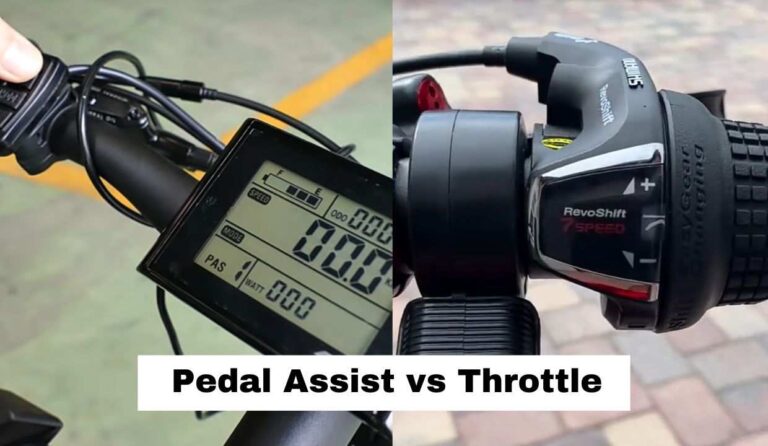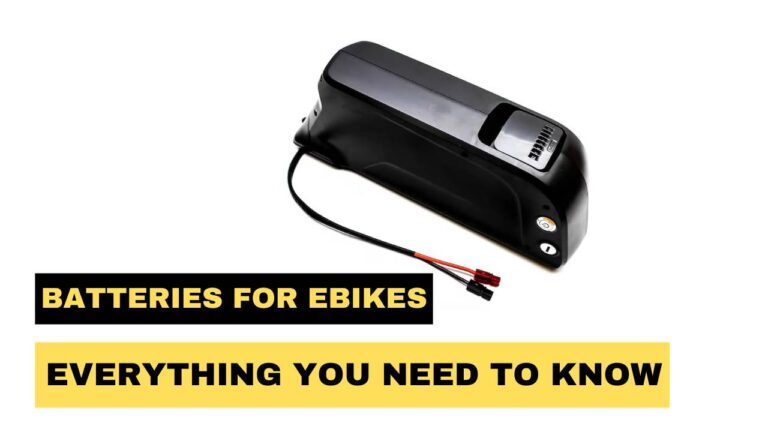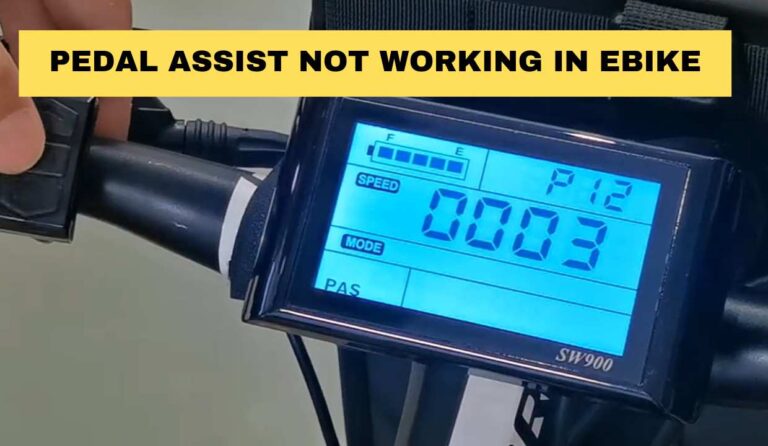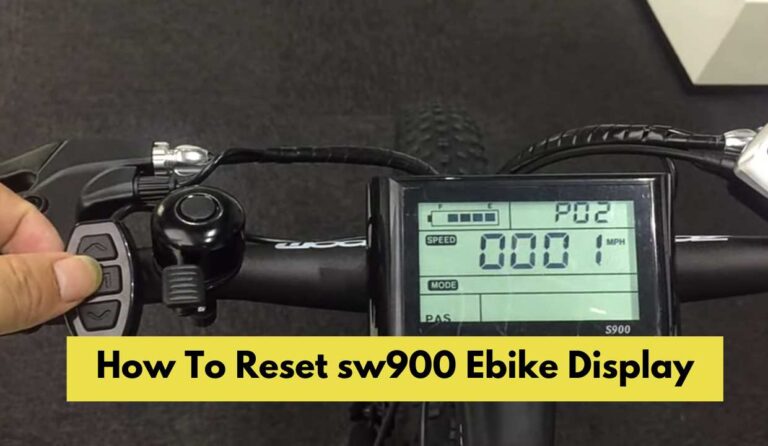How To Charge Ebike Battery Without Charger [6 simple methods]
If you’ve ever wondered how to charge ebike without charger, then you’re not alone. Knowing alternative ways to charge an e-bike is incredibly useful, especially in emergency situations.
Imagine you’re on a long ride, far from home, and your e-bike battery dies unexpectedly without access to a standard charger. Having alternative charging methods allows you to keep going without any hassles.
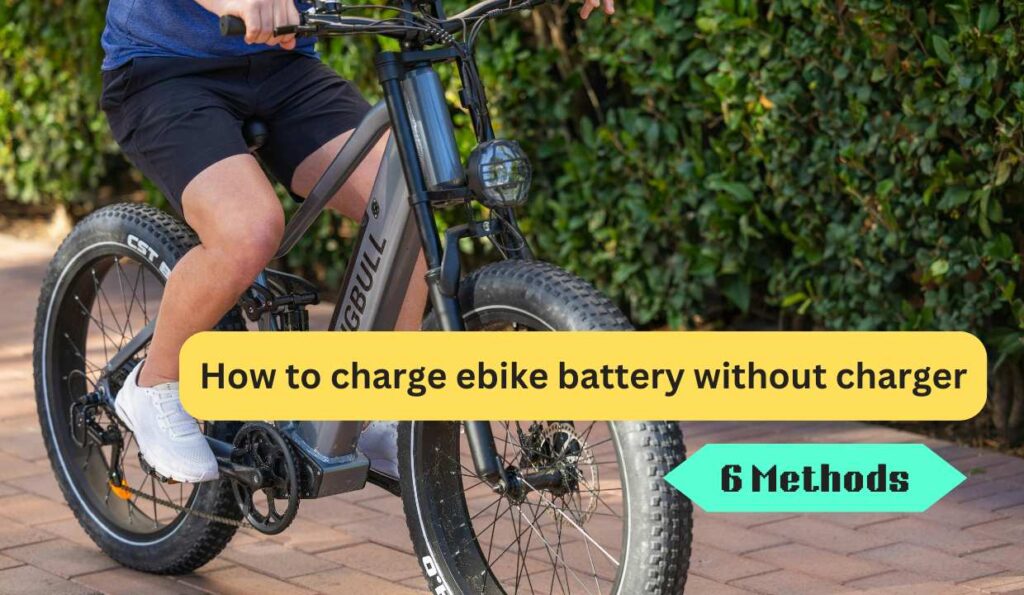
As someone passionate about e-bikes, I’ve explored 6 methods to keep an electric bike running smoothly even when the charger is not around. This article is designed to share the practical knowledge I’ve gained, giving you expert tips and solutions.
In this article, we’ll dive deep into alternative charging methods that can save you from being stranded. From using solar power to car batteries, we’ve got you covered.
Table of Contents
Can You Charge an E-Bike Without a Charger?
Yes, you can charge an e-bike without a traditional charger, but it involves using alternative methods that require some ingenuity and caution.
While it’s not as straightforward as plugging in your standard charger, these alternatives can be lifesavers in emergencies or when you’re away from a typical charging source. However, it’s important to approach these methods carefully, as improper connections or incompatible power sources can damage your e-bike’s battery or pose safety risks.
Always ensure that any alternative charging method matches your battery’s voltage and capacity requirements. By understanding these options, you can keep your e-bike powered and avoid being stranded when your primary charger isn’t available.
Basics of an E-Bike Battery: How It Works
As you know, the battery is the main component of your electric bike. If you remove the battery, it becomes a normal traditional bike. Before charging your ebike battery, you should be aware of its basics and how it works.
Ebike batteries come in a variety of types and sizes, but most ebike batteries are generally made of lithium-ion packs. The battery consists of cells, which are rechargeable and have high energy density. This means that they can store a large amount of energy in a small space. Batteries generate electrical power from chemical reactions. Then it provides electrical power so that you can ride smoothly with less pedaling effort.
The capacity of an e-bike battery is measured in Ampere-Hour. In simple words, it is the rating that tells how much current (ampere) a battery can provide for a specific period of time (hours). Also, watts, current (ampere), and voltages are the important parameters.
Alternative Methods to Charge an E-Bike Battery
1. Using a Car Battery:

Charging an e-bike using a car battery can be a practical solution in certain situations. While not ideal for everyday use, this method can help in emergencies or when you’re far from a standard charging station. Let’s break down how it works and what to keep in mind.
E-bikes typically require a charging voltage that matches their battery specification, most commonly 36V or 48V. A car battery delivers about 12V. So you would need a DC-to-DC converter to step up the voltage to match your e-bike’s battery.
Step 1: Check the compatibility of your ebike battery with car battery output.
Step 2: Connect the DC-to-DC converter
Step 3: Check all connections carefully to avoid any accidents.
Step 4: Monitor the charging and disconnect once fully charged.
2. Using Power Bank:
Using portable power bank to charge ebike battery is one of the easiest and most effective way. Many power banks have a USB port, which you can use to charge your eBike battery. To do this, you will need a USB-to-battery adapter. You can find these adapters online or at a bike shop. It is important to check the power bank’s capacity and your battery’s requirements before attempting this charging method.
Step 1: Carry a high capacity power bank
Step 2: Check your batter’s requirements.
Step 3: Connect USB-to-battery adapter
Keep in mind that a power bank may not have enough capacity to fully charge your eBike battery, especially if it is a large battery.
3. Using Solar Panel:
Charging an e-bike with a solar panel is one of the most eco-friendly and sustainable options available. It’s especially useful if you are off the grid or spending time outdoors, like during a long camping or cycling trip.

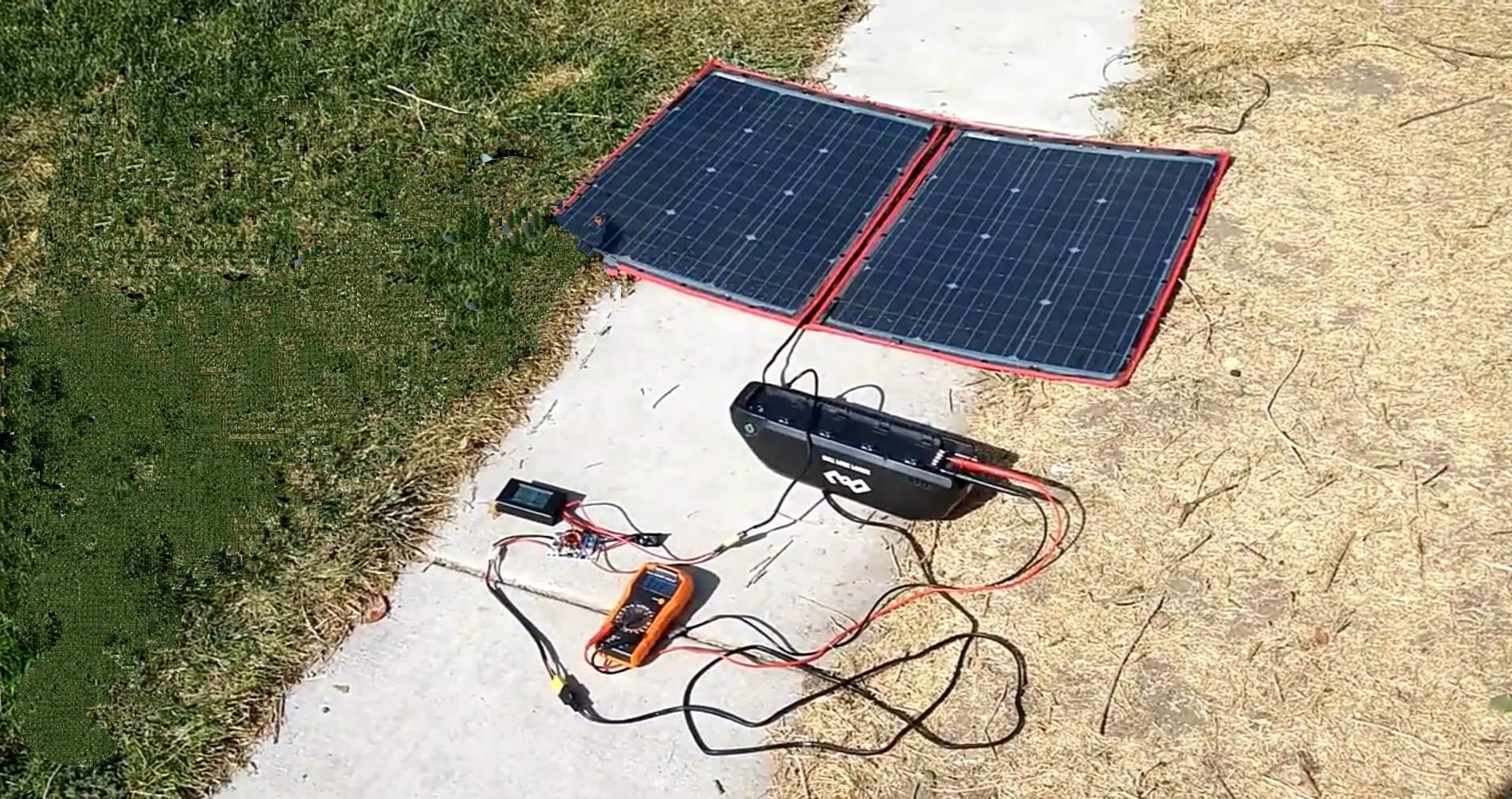
- Charging ebike battery with solar panel
While using solar energy to charge your e-bike battery might not be as quick as plugging it into a wall outlet. You need certain equipment, like a charge controller (which regulates the energy flow from the panel to the battery, preventing overcharging) and a battery charger with a solar panel adaptor. So always buy modern solar panels that come with these in-built features.
Step 1: Select a solar panel with sufficient wattage (typically 100W-200W) that matches your e-bike battery capacity. Ensure the solar panel is portable if you’re planning to use it on the go.
Step 2: Set up the Solar Panel position to face direct sunlight for maximum energy absorption.
Step 3: Connect to the Charge Controller and link to the battery.
Step 4: Monitor the charge and disconnect once fully charged.
4. Using Car charger:
Charging your e-bike using a car charger is a convenient method, especially during long road trips or when you’re away from typical power sources. However, it’s essential to understand that not all car chargers are equipped to handle e-bike batteries, so make sure you’re using the right setup for your bike.
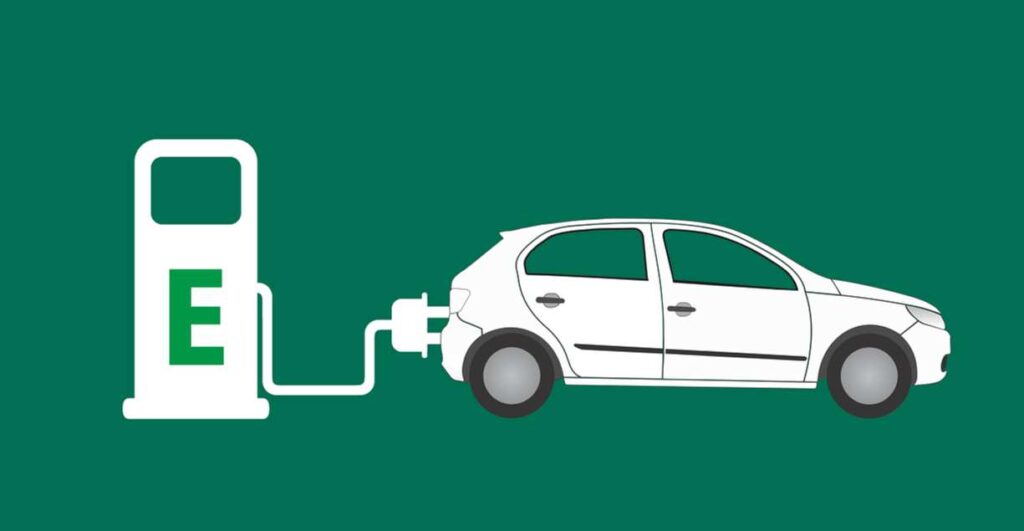
Check car charger voltage and current output before opting for this method. If it is fulfilling your ebike battery requirement, only then go for it.
Step 1: Check the car charger’s voltage and current output.
Step 2: Plug it into your car’s power outlet.
Step 3: Connect it to your ebike battery using an appropriate cable.
Step 4: Monitor the charge and disconnect once fully charged.
5. Using Generator:

Charging your e-bike using a generator can be a reliable solution, especially in remote locations or during extended camping trips where traditional power sources are unavailable. For that, you need a portable generator that can generate electric power to charge your ebike battery. Most e-bike chargers require between 250 to 500 watts to charge a battery efficiently, so it’s essential to select a generator that can produce that range of power without overloading.
As the Generator generates AC power, you need an inverter that converts AC to DC. Then you can connect your ebike battery.
Step 1: Follow the manufacturer’s instructions and safety precautions when using a generator to charge your eBike battery.
Step 2: Connect Generator’s output to the inverter.
Step 3: Adjust the required voltage according to your battery in the inverter.
Step 4: Connect the inverter to the battery.
6. Using Public Charging Stations:
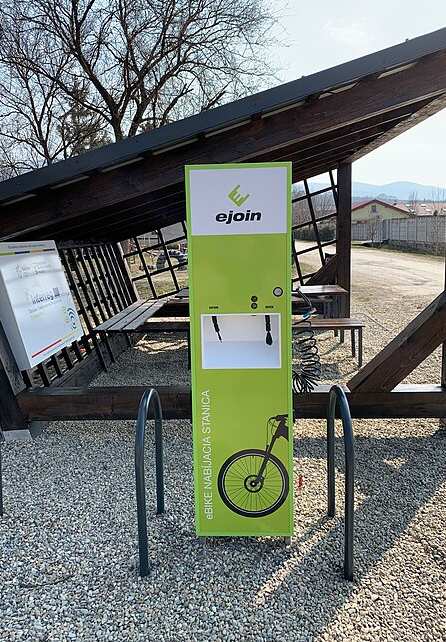
Public charging stations are becoming more common, especially in urban areas, bike-friendly cities, and along popular cycling routes. Moreover, you’re likely to find these charging stations near shopping malls, schools, colleges and parks. These stations are a convenient way to charge your e-bike when you’re on the go and need a quick power boost.
Apps like Google Maps or specialized cycling apps can help you locate nearby stations. Some e-bike brands even have built-in features to locate compatible charging stations. However, one should keep in mind that these charging stations may charge you a fee on the basis of usage time duration.
However, before using a public charging station, ensure its outlet compatibility with your ebike battery specifications.
Step 1: Check the outlet type and your ebike battery compatibility.
Step 2: Plug in your ebike.
Step 3: Check the charging at the display provided at charging stations.
Is It Safe to Charge E-Bike Battery with Non-Standard Methods?
Technically, it is possible to charge an e-bike with these non-standard methods. However, it’s crucial to understand the risks and take necessary precautions to prevent damage or safety issues. Using the recommended charger is always the safest option.
E-bike batteries are designed for specific voltage and current levels, and using an unregulated power source may result in overcharging, overheating, or undercharging, potentially damaging the battery or causing safety hazards like fires. For example, car batteries and solar panels may provide variable voltage, which could negatively impact the health of your e-bike battery. Additionally, improper charging methods can reduce the battery’s lifespan, as they may degrade its capacity faster than standard chargers.
Emergency charging tips for e-bikes
Here’s some emergency charging tips for e-bikes.
- Always charge the battery in temperature controlled environment.
- Before opting for any emergency charging method, always check your e-bike battery specifications and voltage compatibility.
- Never overcharge the battery.
- Check battery level frequently.
- Prefer to use the inverter to keep variable voltage in a constant voltage range.
Conclusion
While alternative charging methods can be helpful in emergencies, it is advisable to use the manufacturer-provided charger whenever possible. Taking these precautions helps protect your battery’s longevity and ensures the safety of your e-bike.
Frequently Asked Questions
1. Can you charge e-bike battery with a solar panel?
Yes, you can charge an e-bike battery with a solar panel. However, you need to ensure the solar panel’s output voltage and current match the requirements of your e-bike battery. Use a suitable solar charger with an in-built charge controller to manage the charging process and prevent damage.
2. Can you charge an e-bike battery with a power bank?
Power banks are supposed to be designed to charge electronic devices such as mobiles, laptops, and tablets. E-bike batteries typically require a higher voltage and current than what most power banks can provide. However, some specialized power banks with higher capacity can be used to charge ebike battery.
3. Can you charge an e-bike battery with a different charger?
It’s possible but not recommended unless the charger is specifically designed for your e-bike battery. Using an incompatible charger can damage the battery or cause safety hazards.
4. How do I know if a charger is compatible with my e-bike battery?
Check the voltage and current specifications of both the charger and the battery. They should match precisely. Always refer to the manufacturer’s guidelines or consult a professional before using a different charger.
5. Can I charge an e-bike battery through the USB port?
No, you cannot charge an e-bike battery through a USB port. USB ports typically provide 5V output, while e-bike batteries require much higher voltage, usually 36V or 48V.
6. How can I charge my e-bike while camping?
To charge your e-bike while camping, you can use a portable generator, a solar panel system, or a car’s power outlet if you’re camping with a vehicle. Ensure you have the proper equipment and adapters to connect your e-bike charger.


